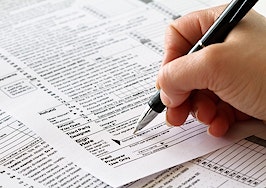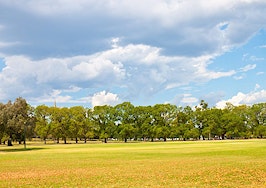Homes and other property in California’s Silicon Valley have never been worth more, according to the Santa Clara County Assessor, which is about to send out letters to 478,000 property owners who can expect to see their assessments go up by an average of 8.35 percent.
Santa Clara County Assessor Larry Stone reported earlier today that the county assessment roll grew by nearly $26 billion, to $334.6 billion. It was the second-highest dollar increase in the county’s history.
“The Silicon Valley economy has been roaring back, leading the nation out of the Great Recession,” Stone said in a statement. “Declining unemployment, a dramatic reduction in office and apartment vacancies, a surge in the NASDAQ, and housing values commanding multiple offers and sales above the asking price all indicate a very robust recovery.”
Stone said it’s “fabulous news” for schools and local public agencies that rely on property tax revenue — and property owners, too.
“The resurgence in the economy is also welcome news for homeowners who are finally seeing the market value of what is usually their single biggest asset, their home, rise above their purchase price, restoring equity lost during the recession,” he said.
Property tax assessments in California are complicated by Proposition 13, which limited taxes on real property to 1 percent of their assessed value. When it was enacted in 1978, Proposition 13 required that properties be assessed at their 1975 value, and tied annual increases of assessed value to inflation, with a cap of 2 percent per year.
But property assessments are shooting up by more than that because assessors are allowed to restore assessed values on properties that were reduced during the downturn.
“Just as we reduced the assessed values when market values declined, so too we must restore the assessments,” Stone said, as mandated by Proposition 8, a companion law to Proposition 13.
Proposition 8 says property owners are entitled to the lower of the fair market value of their property, or the base year value as determined at the time of purchase or construction, and increased by no more than 2 percent annually.
“If an assessment was reduced during the recession, the restoration of the property’s assessed value is not limited to 2 percent, until the market value of the property reaches its purchase price, plus the annual inflation increase of no more than 2 percent,” Stone said. “The market solely determines whether the assessed value of a property is reduced or restored.”
Last year, the assessor’s office said, 136,000 residential properties in Santa Clara County were assessed below their purchase price to account for the collapse of the residential real estate market. This year, the market value of 47,000 of those properties has risen to the point that “all the value lost during the recession has been fully restored, and the market value now exceeds the original purchase price. In addition, the assessed value of another 81,000 properties will be partially restored to reflect the surging residential property market.”
For the remaining 276,000 property owners, the limits imposed by Proposition 13 apply, and the assessed value will increase by 2 percent.
During the past two years, rents for apartments jumped as much as 30 percent, and 8,000 new apartment units are under construction or recently completed in San Jose alone, with another 5,000 units in the South Bay, the assessor’s office said.
Class A office and R&D (research and development) rents have increased nearly 20 percent, and sales of residential homes, both single-family and condominiums, are approaching pre-recession levels.
All 15 cities in Santa Clara County recorded assessment roll growth above 6 percent. Campbell and Cupertino led all municipalities with growth of 11.6 and 10.8 percent, respectively.







